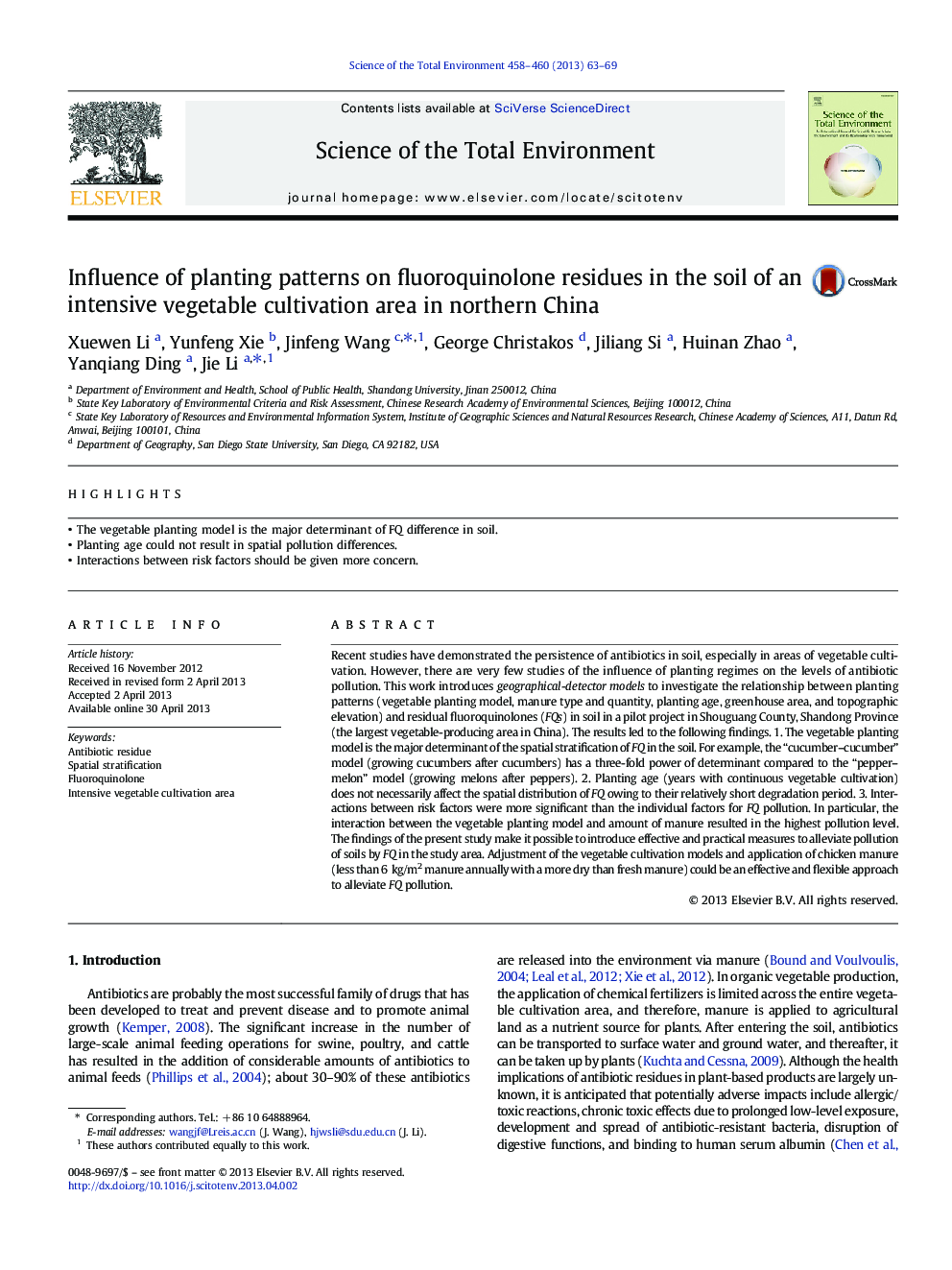| Article ID | Journal | Published Year | Pages | File Type |
|---|---|---|---|---|
| 4428607 | Science of The Total Environment | 2013 | 7 Pages |
Abstract
Recent studies have demonstrated the persistence of antibiotics in soil, especially in areas of vegetable cultivation. However, there are very few studies of the influence of planting regimes on the levels of antibiotic pollution. This work introduces geographical-detector models to investigate the relationship between planting patterns (vegetable planting model, manure type and quantity, planting age, greenhouse area, and topographic elevation) and residual fluoroquinolones (FQs) in soil in a pilot project in Shouguang County, Shandong Province (the largest vegetable-producing area in China). The results led to the following findings. 1. The vegetable planting model is the major determinant of the spatial stratification of FQ in the soil. For example, the “cucumber-cucumber” model (growing cucumbers after cucumbers) has a three-fold power of determinant compared to the “pepper-melon” model (growing melons after peppers). 2. Planting age (years with continuous vegetable cultivation) does not necessarily affect the spatial distribution of FQ owing to their relatively short degradation period. 3. Interactions between risk factors were more significant than the individual factors for FQ pollution. In particular, the interaction between the vegetable planting model and amount of manure resulted in the highest pollution level. The findings of the present study make it possible to introduce effective and practical measures to alleviate pollution of soils by FQ in the study area. Adjustment of the vegetable cultivation models and application of chicken manure (less than 6Â kg/m2 manure annually with a more dry than fresh manure) could be an effective and flexible approach to alleviate FQ pollution.
Related Topics
Life Sciences
Environmental Science
Environmental Chemistry
Authors
Xuewen Li, Yunfeng Xie, Jinfeng Wang, George Christakos, Jiliang Si, Huinan Zhao, Yanqiang Ding, Jie Li,
